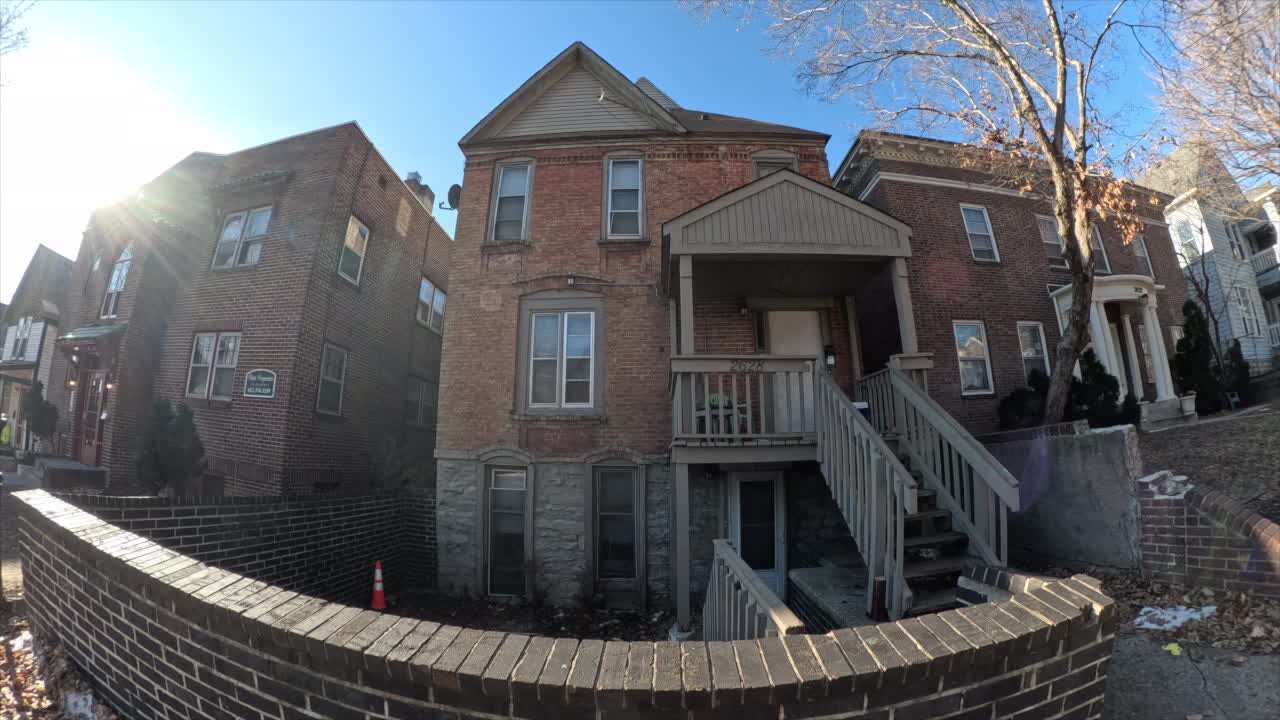Ohio
Norfolk Southern changes policy on overheated bearings, months after Ohio derailment

OMAHA, Neb. — A minor coal train derailment in Virginia in early July prompted Norfolk Southern to rethink the way it responds to problems with overheating bearings, but it’s not clear why the railroad didn’t make similar changes months earlier after an overheating bearing caused the fiery Ohio derailment that prompted nationwide concerns about rail safety.
The National Transportation Safety Board said the Atlanta-based railroad changed its rules a day after the July 6 derailment to take a much more cautious approach when a hot bearing is found. After the derailment, the Brotherhood of Locomotive Engineers and Trainmen union was critical of Norfolk Southern’s response because dispatchers told the crew to move the train 13 miles to a siding down the track even after the crew confirmed a bearing on one of the railcars was overheating, and that’s when it derailed.
The Virginia derailment that happened coming down out of the Appalachian Mountains near Elliston was relatively minor, with only 19 cars coming off the tracks and none of the coal spilling. The situation in East Palestine, Ohio, was much different with hazardous chemicals spilling from ruptured tank cars and officials deciding to blow open five other tank cars filled with vinyl chloride because they feared they might explode. The cleanup from that Feb. 3 derailment is ongoing, and area residents worry about the possibility of lingering health effects.
Unlike in the East Palestine, Ohio, derailment, the Virginia train crew had enough time to stop the train safely after a trackside detector set off an alarm about the overheating bearing. The conductor walked back and confirmed the problem with a wax stick that’s designed to melt anytime the temperature is above 169 degrees Fahrenheit. He also noticed grease leaking from one of the axle bearings, according to the NTSB’s preliminary report.
At the time the Virginia train derailed it was moving 25 mph — well below the 40 mph speed limit for the area but not slow enough to prevent the derailment.
The new rules Norfolk Southern issued the following day said that in a situation like that when any damage is noticed on a hot bearing, the railroad will send out a mechanical inspector to look at a car before it is moved. And anytime a car with an overheated bearing is moved, the train will move no faster than 10 mph with the crew stopping at least every three miles to reinspect the bearing.
Norfolk Southern spokesman Connor Spielmaker said the changes were made as part of the railroad’s effort to become “the gold standard for safety in the railroad industry” but he didn’t address why these changes weren’t made after the East Palestine derailment.
Norfolk Southern locomotives are moved in Norfolk Southern’s Conway Terminal in Conway, Pa., Saturday, June 17, 2023. Credit: AP/Gene J. Puskar
“We are not going to stop until we complete the culture, process, and technology changes required to make accidents like this a thing of the past,” Spielmaker said.
The railroad has announced a number of efforts to improve safety since February including an effort to work with its unions and hiring an outside consultant. Norfolk Southern’s CEO Alan Shaw emphasized those steps while testifying on Congress and apologizing for the Ohio derailment.
Lawmakers are considering imposing a package of reforms on the rail industry. And the railroads themselves have announced several efforts to improve safety including installing about 1,000 more trackside detectors nationwide to help spot mechanical problems before they can cause derailments.
Even with the recent safety concerns, railroads are still regarded as the safest way to transport goods across land, but the Ohio derailment illustrates that even one derailment involving hazardous chemicals can be disastrous.

Ohio
Could an Ohio hiking route join the ranks of the Appalachian and Pacific Crest trails?
A nearly 1,500 mile loop of hiking trails in Ohio could soon join the ranks of the Appalachian Trail and the Pacific Crest Trail.
The National Park Service is evaluating whether to add the Buckeye Trail, which runs from Lake Erie to the Ohio River, to its National Trails System. Over the next several weeks, the service will share information about its feasibility study and hear from the public at cities around the state. One of those meetings will be held in Cincinnati on Jan. 16.
The Buckeye Trail was built from 1959 to 1980 by the Buckeye Trail Association, a nonprofit. The loop of trail systems stretches 1,454 miles across farmland in northwest Ohio, the Bluegrass region of southwest Ohio, the Black Hand sandstone cliffs around Hocking Hills and the hills of Appalachia. More than half of the route overlaps the North County National Scenic Trail.
What are National Scenic Trails?
Currently there are 11 National Scenic Trails:
- The Appalachian Trail stretches 2,190 miles through 13 states between Maine and North Carolina.
- The Arizona Trail stretches 800 miles through Arizona.
- The Continental Divide Trail stretches 3,100 miles through Montana, Idaho, Wyoming, Colorado and New Mexico.
- The Florida Trail stretches 1,300 miles through Florida.
- The Ice Age Trail stretches 1,000 miles through Wisconsin.
- The Natchez Trace Trail stretches 65 miles through Mississippi.
- The New England Trail stretches 215 miles through Connecticut and Massachusetts.
- The North Country Trail stretches 4,600 miles through eight states including Ohio.
- The Pacific Crest Trail stretches 2,650 miles through California, Oregon and Washington.
- The Pacific Northwest Trail stretches 1,200 miles through Idaho, Montana and Washington.
- The Potomac Heritage Trail stretches 710 miles through Virginia, Pennsylvania, Maryland and Washington, D.C.
The designated routes for hiking and biking showcase some of the country’s beautiful landscapes and attract tourists from around the world. They are managed by federal and state agencies.
Make your voice heard
Ohioans can voice their stance on whether the Buckeye Trail should become a National Scenic Trail at the following meetings for public comment:
- Jan. 13 from 4 to 7 p.m. at the Hines Hill Conference Center at 1403 West Hines Hill Road in Peninsula.
- Jan. 14 from 4 to 7 p.m. at the Henry County Hospital Heller Community Room at 1600 E Riverview in Napoleon.
- Jan. 15 from 4 to 7 p.m. at the Huffman Prairie Flying Field Interpretive Center at 2380 Memorial Road in Dayton.
- Jan. 16 from 4 to 7 p.m. at the Digital Futures Building Level 1 Conference Room at 3080 Exploration Ave. in Cincinnati.
- Jan. 17 from 3 to 6 p.m. at the Athens Community Center Room B and C at 701 E State St. in Athens.
There will be a virtual public meeting, too, on Jan. 23 from 5:30 to 6:30 p.m. Participants can attend online.
The public comment period is open now through Feb. 19. Members of the public are invited to review the National Park Service’s study process and share feedback online.
Ohio
Ohio criminalizes sextortion after death of Olentangy High School student
The law signed Wednesday by Gov. Mike DeWine makes makes sexual extortion a third-degree felony, with harsher penalties possible
Sextortion schemes that often target minors and caused the death of a suburban Columbus high school student are now illegal in Ohio.
Gov. Mike DeWine signed legislation Wednesday named for Olentangy High School football player Braden Markus that criminalizes sexual extortion, which occurs when someone blackmails another person over the release of private images. Ohio lawmakers passed the bill last month, more than three years after Braden fell victim to sextortion and killed himself.
“We can’t bring Braden back, but what we can do is something in his name today and say we’re going to make a difference,” DeWine said during a signing ceremony at the Ohio Statehouse, surrounded by Braden’s family and friends.
House Bill 531 makes sexual extortion a third-degree felony, with harsher penalties if the victims are minors, seniors or people with disabilities. When sentencing offenders, courts must consider whether the victim died by suicide or suffered “serious physical, psychological, or economic harm.”
The law also makes it easier for parents to access their child’s digital assets if they die as a minor. Rep. Beth Lear, R-Galena, who co-sponsored the bill, said Braden’s family wondered for months what happened to him because they couldn’t get into his cell phone.
Federal authorities received over 13,000 reports of online sexual extortion involving minors − primarily boys − from October 2021 to March 2023, according to the FBI. In Braden’s case, someone posing as high school girl on social media asked Braden for intimate photos and then demanded $1,800 so they wouldn’t be published. He died a half hour later.
“I’m hoping that there’s a deterrent,” Braden’s mother, Jennifer Markus, told the Columbus Dispatch last month. “Knowing that this law is there, that they will quit preying on our kids.”
An early version of the bill would have made victims and their families eligible for compensation through the attorney general’s office, but lawmakers axed that provision. A spokesperson for Attorney General Dave Yost did not immediately respond to a request for comment.
Donovan Hunt contributed to this report.
Haley BeMiller covers state government and politics for the USA TODAY Network Ohio Bureau, which serves the Columbus Dispatch, Cincinnati Enquirer, Akron Beacon Journal and 18 other affiliated news organizations across Ohio.
Ohio
Cotton Bowl weather worry prompts Texas-Ohio State CFP ‘contingencies’

There is some uncertainty surrounding the Cotton Bowl entering Friday’s College Football Playoff semifinal between Texas and Ohio State at the Dallas Cowboys’ stadium, with bowl organizers preparing “contingencies” due to the weather forecast.
Arlington, Texas is under a winter storm warning from Thursday morning to Friday afternoon, with the possibility of several inches of snow.
While the stadium has a roof, the weather could create dangerous road conditions for fans traveling to the game.
A joint statement from AT&T Stadium and the Cotton Bowl Tuesday night said the game will be played as scheduled at 7:30 p.m. ET, with the two teams arriving to town Wednesday.
“We continue to monitor weather reports, and over the last 24 hours, the forecast for later this week has improved according to the National Weather Service,” the statement said. “We have been meeting routinely with city officials, the Director of Transportation for North Texas and the College Football Playoff. Should the forecast shift, we are prepared for contingencies.
“North Texas highways are already being brined and plans are in place to ensure a safe environment for everyone in and around AT&T Stadium on game day.”
More than 70,000 people are expected to attend Friday’s game, the winner of which will face the victor of the Penn State-Notre Dame Orange Bowl semifinal in the national championship game on Jan. 20.
Kevin Oden, the Dallas director of emergency management and crisis response, said staffing will be increased Wednesday in anticipation of the storm.
“We’re closely monitoring travel conditions into the city, especially as we prepare to host fans and teams for the Cotton Bowl,” Oden said. “Our priority is ensuring safe travel for the teams and their fans visiting Dallas and the metroplex.”
-

 Business1 week ago
Business1 week agoThese are the top 7 issues facing the struggling restaurant industry in 2025
-

 Culture1 week ago
Culture1 week agoThe 25 worst losses in college football history, including Baylor’s 2024 entry at Colorado
-

 Sports1 week ago
Sports1 week agoThe top out-of-contract players available as free transfers: Kimmich, De Bruyne, Van Dijk…
-

 Politics7 days ago
Politics7 days agoNew Orleans attacker had 'remote detonator' for explosives in French Quarter, Biden says
-

 Politics6 days ago
Politics6 days agoCarter's judicial picks reshaped the federal bench across the country
-

 Politics5 days ago
Politics5 days agoWho Are the Recipients of the Presidential Medal of Freedom?
-

 Health4 days ago
Health4 days agoOzempic ‘microdosing’ is the new weight-loss trend: Should you try it?
-

 World1 week ago
World1 week agoIvory Coast says French troops to leave country after decades


















